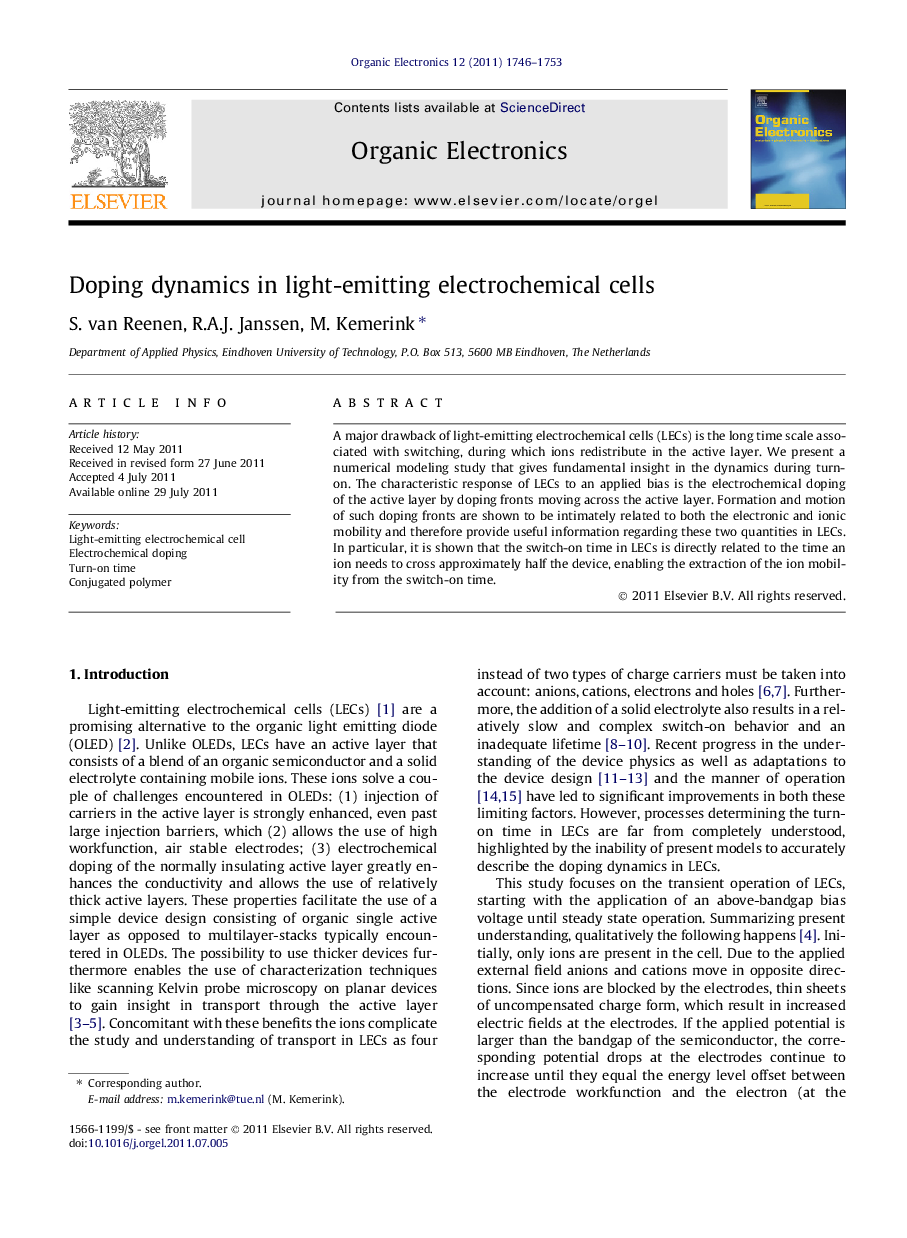| Article ID | Journal | Published Year | Pages | File Type |
|---|---|---|---|---|
| 1267619 | Organic Electronics | 2011 | 8 Pages |
A major drawback of light-emitting electrochemical cells (LECs) is the long time scale associated with switching, during which ions redistribute in the active layer. We present a numerical modeling study that gives fundamental insight in the dynamics during turn-on. The characteristic response of LECs to an applied bias is the electrochemical doping of the active layer by doping fronts moving across the active layer. Formation and motion of such doping fronts are shown to be intimately related to both the electronic and ionic mobility and therefore provide useful information regarding these two quantities in LECs. In particular, it is shown that the switch-on time in LECs is directly related to the time an ion needs to cross approximately half the device, enabling the extraction of the ion mobility from the switch-on time.
Graphical abstractFigure optionsDownload full-size imageDownload as PowerPoint slideHighlights► Transient behavior of planar light-emitting electrochemical cells can be modeled. ► Doping front formation originates from charge mobility enhancement by doping. ► Turn-on time of LECs is rationalized. ► Ion mobility can be extracted from device geometry and current transient.
